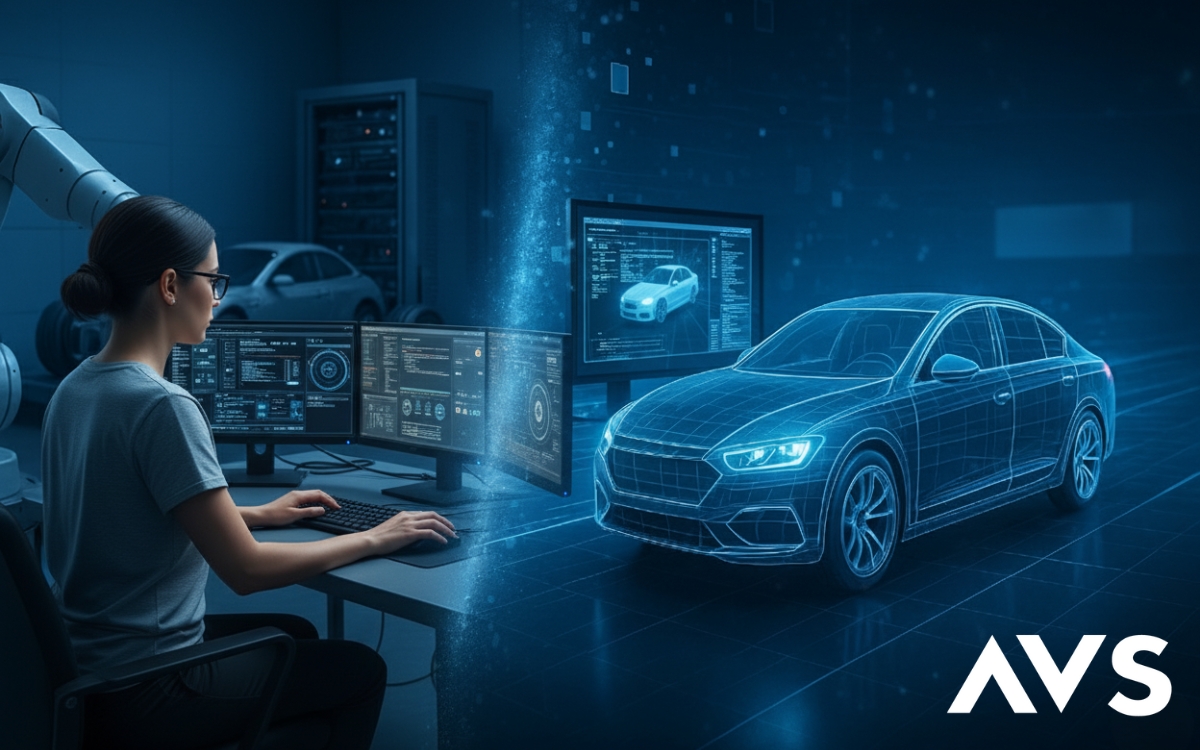As vehicle systems become more complex, connected, and safety-critical, validating their behavior under all conditions is no longer optional, it’s essential. Whether you’re testing a lane keeping assistant, a thermal management controller, or a complete ADAS module, virtual testing has become a central pillar of modern automotive development.
Two main methods structure this virtual validation chain:
Software-in-the-Loop (SIL) and Hardware-in-the-Loop (HIL).
While they are sometimes seen as technical buzzwords, SIL and HIL are in fact complementary tools that, when used together, can dramatically accelerate development, increase robustness, and reduce costs. Let’s explore what they are, how they differ, and why they matter.
SIL: testing your software from day one
SIL involves testing embedded software components in a purely virtual environment, without any real hardware involved.
It’s the earliest and fastest way to verify software logic and reactions in controlled scenarios. SIL is used to:
- Run early tests on algorithms using simulated sensor data
- Identify bugs or unexpected behaviors before integration
- Iterate rapidly on the software codebase without hardware dependencies
For example, an emergency braking algorithm can be tested against dozens of virtual situations (e.g. pedestrian crossing, sudden stop ahead) using SCANeR™, with vehicle dynamics and sensor data fully simulated. Engineers analyze the software response braking time, target detection, activation threshold to refine the logic.
HIL: testing real hardware in a virtual world
Once the software behaves correctly in simulation, the next step is to verify its real-time behavior on physical hardware. That’s the role of HIL, where the real ECU is connected to a simulation environment.
During HIL tests, the ECU receives inputs from:
- Real-time simulation (vehicle speed, road friction, sensor signals)
- Fault injection scenarios (loss of CAN signal, extreme braking)
- Virtual sensor feeds (camera, radar, lidar), provided by SCANeR™
The outputs are monitored just like in a real vehicle: engineers verify latency, signal integrity, safety logic, and compliance with system specifications.
Not a choice, a sequence
SIL and HIL are not competing approaches. They form a progressive validation chain, each playing a distinct role.
| Stage | Main purpose | Environment | Benefits |
| SIL | Validate software logic | 100% simulated | Fast, repeatable, ideal for early development |
| HIL | Validate hardware/software integration | Real ECU + virtual vehicle | Realistic, safe, reproducible for critical testing |
By chaining SIL and HIL, teams reduce the number of bugs, improve coverage, and limit surprises during real-world integration.
SCANeR™: a unified platform for SIL and HIL testing
SCANeR™ provides a modular, open architecture that supports both SIL and HIL workflows:
- In SIL: run embedded software with simulated vehicle, sensors, traffic, and environment
- In HIL: connect real ECUs, synchronize data in real time, integrate with dSPACE, NI, RTMaps and more
- Hybrid configurations: mix real and simulated components to match your architecture
The result: a continuous validation chain, aligned with the requirements of modern automotive development and the Software Defined Vehicle (SDV).
Use case: validating a multi-layer ADAS system
Let’s take a lane change assistant as an example:
- In SIL, the team tests the decision logic, lane detection, blind spot check, safe maneuver conditions
- In HIL, the real ECU is connected, receiving simulated radar and camera signals, while the team evaluates its real-time reaction under various driving scenarios
SCANeR™ orchestrates the entire process, including scenario libraries such as Euro NCAP, and allows automation across hundreds of test cases.
Why build a SIL–HIL pipeline?
A well-structured virtual testing process allows you to:
- Catch bugs early (up to 50% of issues found before integration)
- Reduce physical prototype usage
- Speed up release cycles
- Increase test coverage and traceability
- Meet ISO 26262 and SOTIF requirements
Most importantly, it enables a controlled, scalable path to production in a world where software is now the heart of the vehicle.
Conclusion: mastering virtual validation
As the Software Defined Vehicle becomes a reality, the ability to simulate, test, and validate each embedded function step by step is a strategic advantage.
SIL and HIL are not just testing tools. They are building blocks of a modern automotive development process, enabling agility, safety, and reliability.
With SCANeR™, AVSimulation offers a powerful, unified platform to support this virtual testing pipeline from first lines of code to hardware validation and integration.


